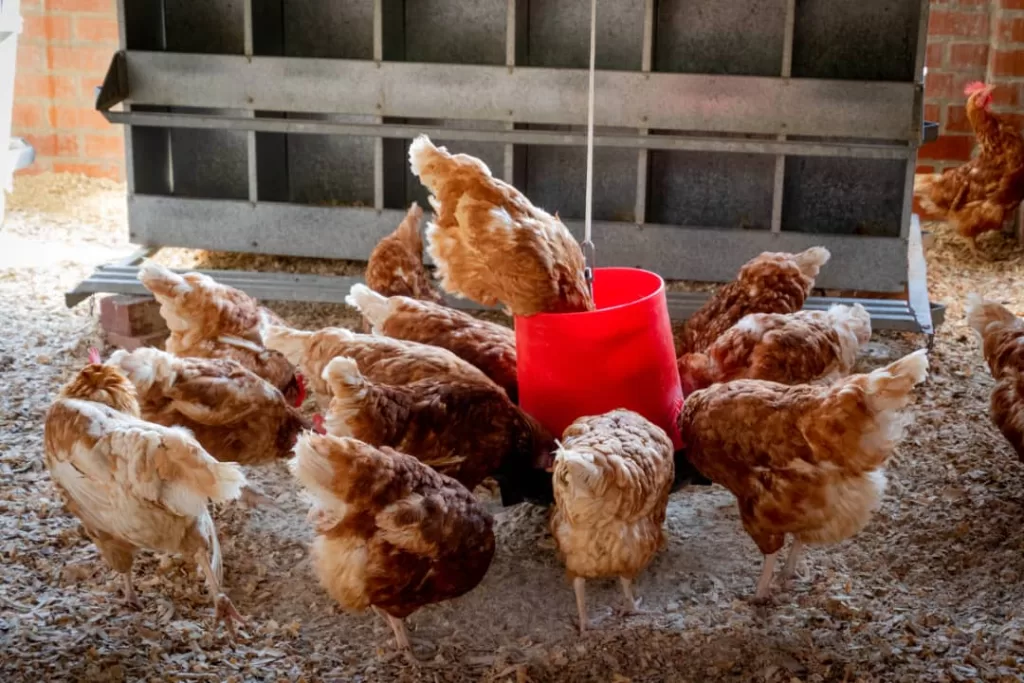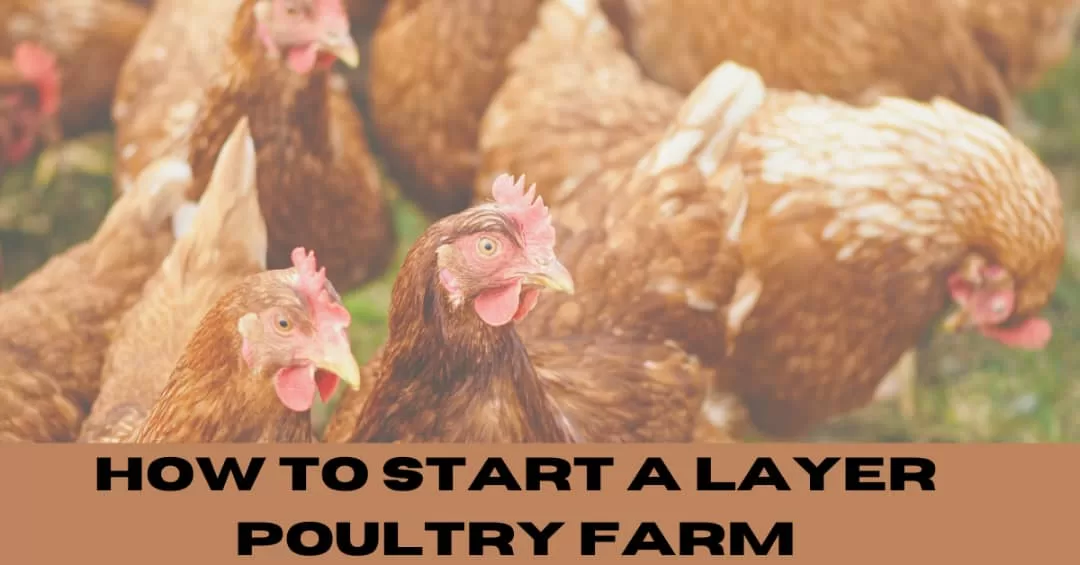How to Start a Layer Poultry Farm
How to start a layer poultry farm: Starting a layer poultry farm can be a profitable and viable business for individuals interested in animal husbandry. However, Layer poultry farming involves raising chickens primarily for their egg-laying abilities.
In recent years, there has been a growing demand for locally sourced and organic eggs, making this type of farming increasingly popular. In this article, I will explain how to start a layer poultry farm, covering everything from choosing the right breed to marketing and selling your products.
What is a Layer Poultry Farm?
A layer poultry farm is a type of poultry farm that focuses on raising chickens for their egg-laying abilities. These chickens are otherwise called layers. They are bred specifically for their high egg production rates. The eggs produced on a layer poultry farm can be sold locally at farmers’ markets, to nearby restaurants and grocery stores, or online through marketplaces like Amazon Fresh.
In recent years, there has been a growing demand for locally sourced and organic eggs due to concerns about the environmental impact of industrial farming practices. As a result, layer poultry farming has become increasingly popular among individuals interested in sustainable agriculture practices.
How to Start Fish Farming on a Small Scale
How to Start a Layer Poultry Farm
Are you looking for how to start a layer Poultry farm? Below are the five (5) required methods:
1. Choosing the Right Breed
Selecting the right breed of chicken is crucial for a successful layer poultry farm. Some species are better suited for egg production than others. Here are some popular breeds known for their egg-laying abilities:
- Leghorns: Leghorns are a popular choice for layer poultry farming due to their high egg production rate. They lay around 280-320 eggs in one year. They are also known for their white eggs.
- Rhode Island Reds: Rhode Island Reds are a dual-purpose breed well-suited for egg production. They lay around 250-300 eggs annually and are known for their reddish-brown eggs.
- Plymouth Rocks: Plymouth Rocks are a hardy breed well-suited for cold climates. In a year, they lay around 200-250 eggs and are known for their brown eggs.
- Sussex: Sussex chickens are a dual-purpose breed well-suited for egg production. They lay around 250-300 eggs annually and are known for their brown or cream-colored eggs.
When choosing your breed, consider climate, feed requirements, and disease resistance to ensure a healthy and productive flock.
2. Building the Coop
Your coop should be spacious, well-ventilated, and provide enough space for each chicken to move around comfortably.
Below are some tips for building the perfect coop:
- Size: Your coop should be at least 4 square feet per chicken to provide enough space for them to move around comfortably. It should also have enough nesting boxes to accommodate all of your chickens.
- Ventilation: Proper ventilation is crucial to prevent the buildup of moisture and bacteria in the coop, which can lead to respiratory problems in your chickens. Make sure your cage has enough vents and windows to provide adequate airflow.
- Lighting: Chickens require at least 14 hours of light per day to stimulate egg production. Consider adding artificial lighting to your coop during the winter months when natural light is limited.
- Heating: Depending on your climate, you may need to provide heating in your coop during the winter months to keep your chickens warm and comfortable. Make sure your heating system is safe and does not pose a fire hazard.

3. Providing Feed and Water
Providing your chickens with a balanced diet and clean water at all times is essential for optimal egg production.
Here are some ways to feed and water your flock:
- Feed: Chickens require a balanced diet with protein, carbohydrates, and minerals such as calcium and vitamin D3. Add supplements such as calcium or vitamins to their feed to promote healthy egg production. Ensure you provide enough feed to meet the nutritional needs of your flock without overfeeding them, as this can lead to obesity and health problems.
- Water: Chickens require access to clean water at all times to stay hydrated and promote healthy egg production. Make sure you provide enough waterers to accommodate all of your chickens and clean them regularly to prevent the buildup of bacteria or mold. Consider adding a water heater during the winter months to avoid frozen waterers or ice buildup in the waterers, which can lead to dehydration in your chickens.
4. Providing Healthcare
Regularly monitoring your chickens for signs of illness or disease is crucial for maintaining a healthy flock. Here are some healthcare tips:
- Vaccinations: Consider vaccinating your chickens against common diseases such as Marek’s or Newcastle’s to prevent outbreaks in your flock. Make sure you follow the manufacturer’s instructions carefully when administering vaccinations, as improper vaccination techniques can lead to adverse reactions in your chickens or reduce the effectiveness of the vaccine.
- Deworming Treatments: Regular deworming treatments can help prevent parasitic infections in your chickens, leading to weight loss, poor egg production, or death in severe cases. Ensure you follow the manufacturer’s instructions carefully when administering deworming treatments, as improper dosages or administration techniques can lead to adverse reactions in your chickens or reduce the effectiveness of the treatment.
5. Market and Sell your Poultry Layers
Once your chickens start laying eggs, you must find product buyers.
Below are where to sell your Poultry Layers:
- Farmer’s Market: Consider selling your eggs at local farmers’ markets to connect with potential customers and promote your busines. Try to bring plenty of eggs with you and have enough change on hand to make change easily for customers who pay with cash or small bills/coins (either US dollars or local currency). You may also consider offering discounts or promotions at farmers’ markets during slow periods (such as midday) holidays or special events (such as Mother’s Day).
- Other Places: Consider selling your eggs directly to nearby restaurants, grocery stores, coops, farmstands, online marketplaces (such as Amazon Fresh), social media platforms (such as Facebook Marketplace), etc., instead of relying solely on farmers’ markets (which may not always be convenient or practical due to factors such as distance from home/farm, time constraints, weather conditions, etc.).
Frequently Asked Questions on How to Start a Layer Poultry Farm
Q1. What are some popular breeds for layer poultry farming?
A1: Some popular breeds for layer poultry farming include Leghorns, Rhode Island Reds, Plymouth Rocks, and Sussex.
Q2. How much space do I need to provide for each chicken in the coop?
A2: Each chicken has at least 4 square feet of space in the coop to provide enough room to move around comfortably.
Q3. How often should I provide my chickens with vaccinations and deworming treatments?
The frequency of vaccinations and deworming treatments will depend on the specific needs of your flock and the recommendations of your veterinarian or poultry expert.
wrap up
In this article, I have successfully listed guidelines for starting a layer Poultry farm. However, beginning a layer poultry farm can be a profitable and rewarding business, especially for individuals interested in sustainable agriculture practices.
By following these steps in this post and staying committed to their business over time, layer poultry farmers can build successful and profitable operations that provide fresh, locally sourced eggs while promoting sustainable agriculture practices within their communities.
Remember to choose the right breed of chicken, provide enough space in the coop, provide a balanced diet and clean water, provide healthcare through vaccinations and deworming treatments, and market and sell the eggs to customers through various channels.








